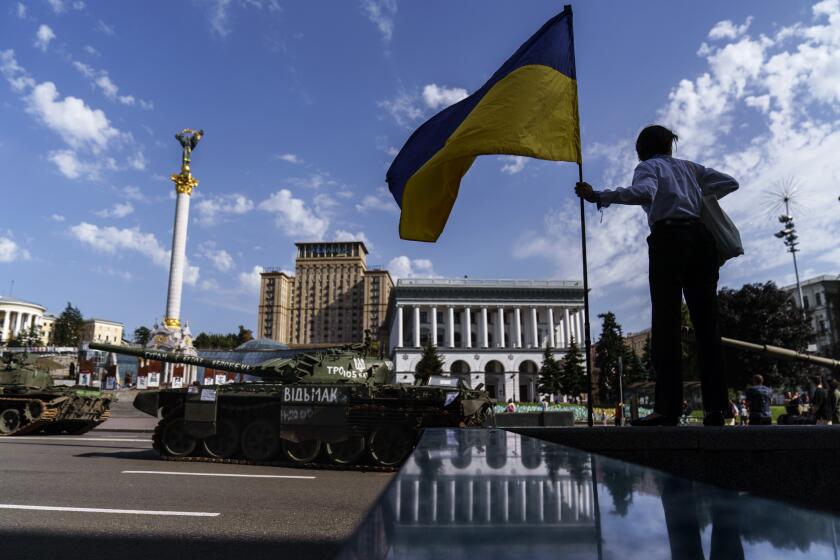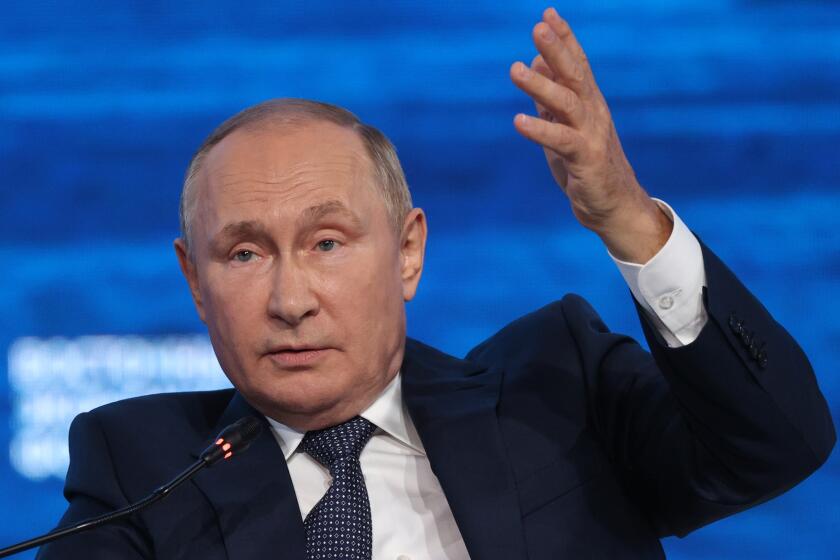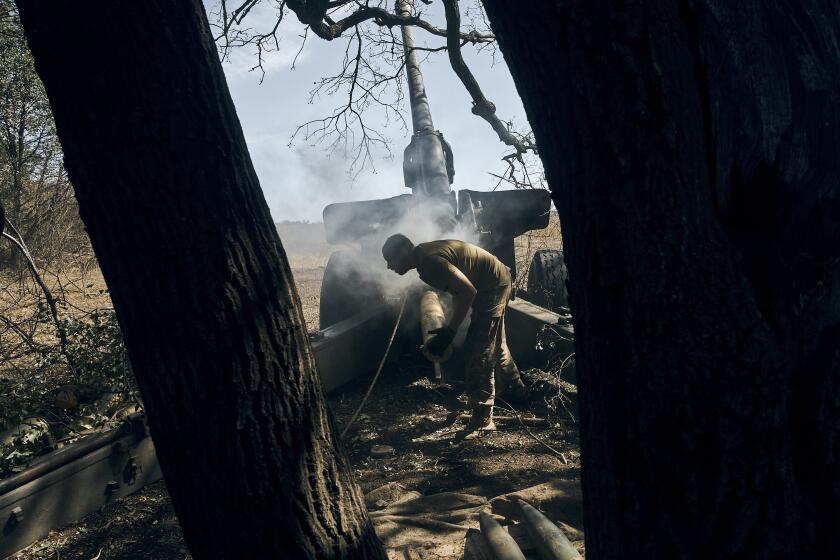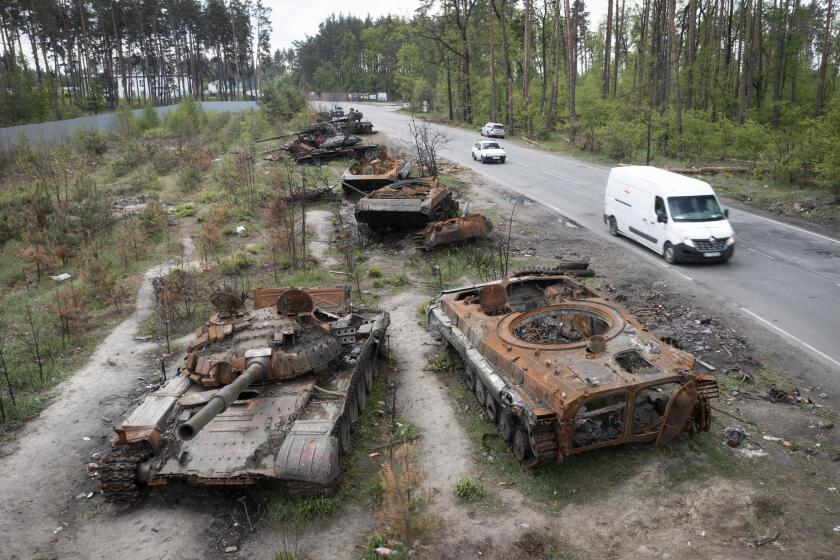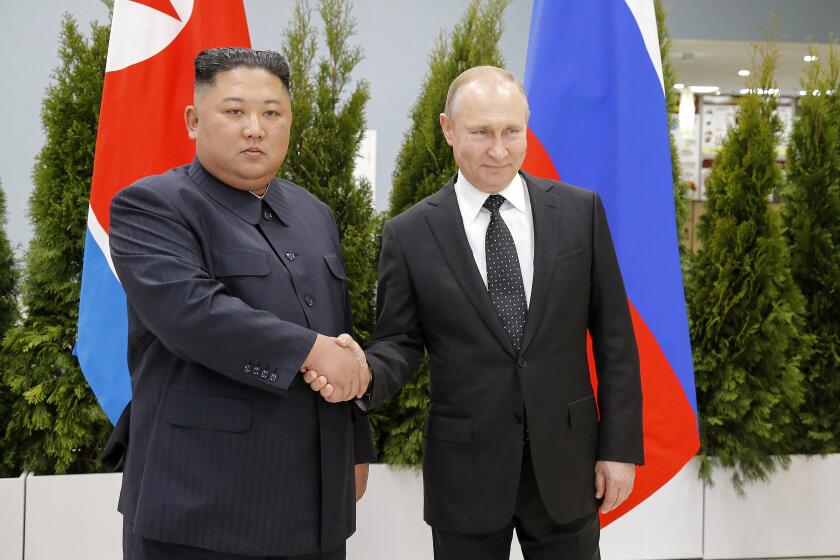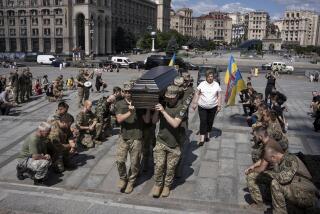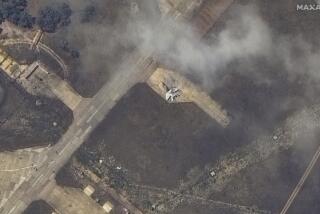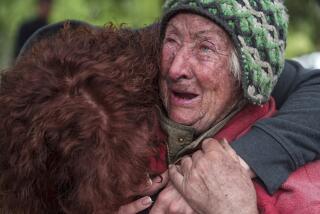Shelling goes on near Ukrainian power plant, despite risk of nuclear disaster
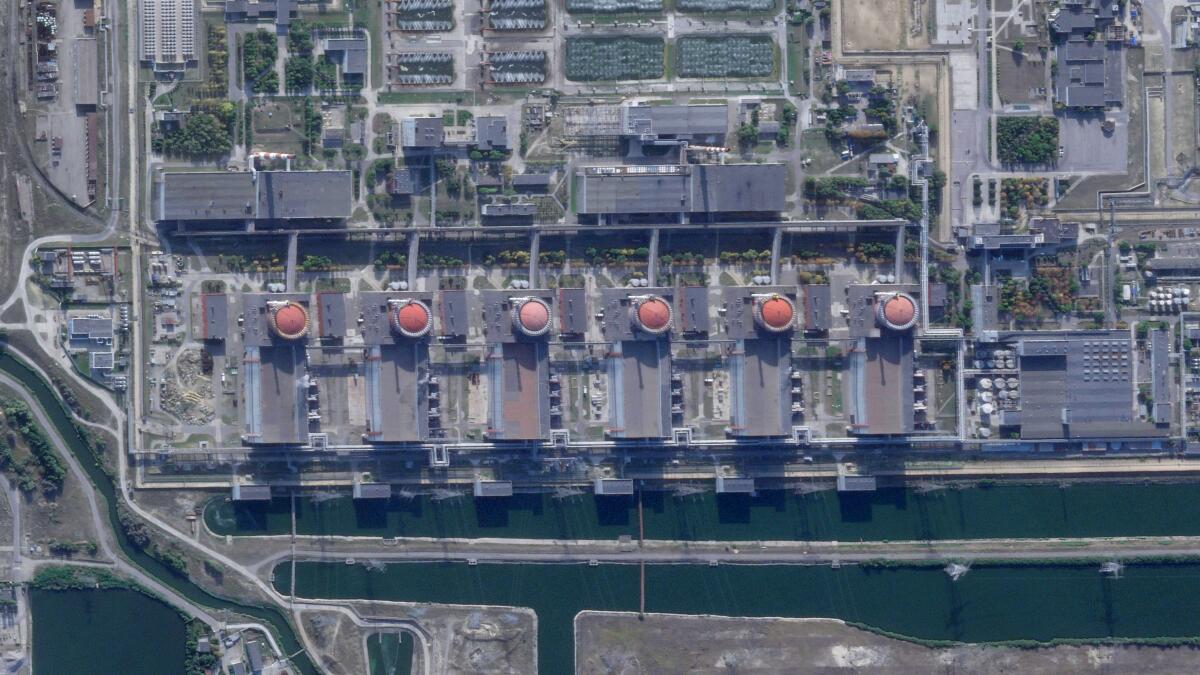
- Share via
KYIV, Ukraine — Shelling resumed near Ukraine’s Zaporizhzhia nuclear power plant, with the warring sides trading blame again Wednesday, a day after the United Nations atomic watchdog agency pressed for a safe zone there to prevent a catastrophe.
Russian forces fired rockets and heavy artillery on the city of Nikopol, on the opposite bank of the Dnieper River from Europe’s largest nuclear plant, regional Gov. Valentyn Reznichenko said.
“There are fires, blackouts and other things at the [plant] that force us to prepare the local population for the consequences of the nuclear danger,” Reznichenko said. Officials in recent days have distributed iodine pills to residents to help protect them in the event of a radiation leak.
In Enerhodar, where the power plant is located, Dmytro Orlov, the pre-occupation mayor, reported that the city came under Russian attack for a second time Wednesday and was without power.
“Employees of communal and other services simply do not have time to complete emergency and restoration work, as another shelling reduces their work to zero,” he said on the Telegram messaging app.
The Russian side blamed the Ukrainians. Vladimir Rogov, the head of the Russia-installed Enerhodar administration, said on Telegram that heavy Ukrainian fighting had caused the city’s blackout, and Russia’s Defense Ministry blamed the outage on Ukrainian forces attacking a power substation.
Far from bogging down in a stalemate, Russia’s invasion of Ukraine presents new perils after six months, including the threat of a nuclear disaster.
Russian rockets on Wednesday hit the village of Mala Tokmachka, about 55 miles northeast of Enerhodar, killing three people and injuring five, Zaporizhzhia regional Gov. Oleksandr Starukh reported.
It was not possible to independently reconcile the conflicting reports of the fighting, which has caused international alarm.
The head of the International Atomic Energy Agency, Rafael Mariano Grossi, warned the U.N. Security Council on Tuesday that “something very, very catastrophic could take place” at Zaporizhzhia. The potential peril led the atomic energy agency to urge Russia and Ukraine to establish a “nuclear safety and security protection zone” around the plant.
There are fears that the fighting could trigger a catastrophe on the scale of the Chernobyl disaster in 1986.
Russian President Vladimir Putin says Moscow has resisted the ‘economic, financial and technological aggression’ of the West’s sanctions over Ukraine.
Neither Moscow nor Kyiv would immediately commit to the idea of a safety zone.
Conditions at the plant have worsened. Because of damage to external power lines from the fighting, the plant is generating electricity only to power safety systems that keep the reactor cores cool and prevent them from melting down, a Ukrainian official said.
Any further power disruption could force the plant to use backup diesel generators, requiring four diesel fuel trucks a day to travel through the battle zone, said Oleh Korikov, Ukraine’s acting chief inspector for nuclear and radiation safety.
“We could potentially be in a situation where we run out of diesel,” he said. “And this can lead to an accident with damage to the active zone of the reactors and,
accordingly, the release of radioactive products into the environment.”
The plant had to activate its diesel generators late last month, according to Ukrainian officials.
Russian energy company Gazprom has said a suspension of gas supplies heading west through the Nord Stream 1 pipeline would be extended indefinitely.
Authorities could consider shutting down the plant, Korikov said, without offering details.
The plant’s operator, Energoatom, said that despite the shelling, Ukrainian staff still working at the Russian-occupied plant will try to restore external power.
Russian President Vladimir Putin rejected pressure to pause the fighting, saying Wednesday that Moscow would forge ahead with its military offensive in Ukraine until it achieved its goals. He also mocked Western attempts to punish Russia with sanctions.
Putin, whose statements during the war have often proved false, told an economic forum in the far eastern Russian port city of Vladivostok that even though the International Atomic Energy Agency didn’t assign blame for the shelling around the Zaporizhzhia plant, claims that Russian forces were responsible are “absolute nonsense.”
He asked rhetorically, “Well, are we shooting at ourselves or what?”
He claimed fragments of Western weapons had been found at the plant, denied that Russia had placed military equipment there and said he did not understand why Ukraine would fire on the facility other than “to create an additional crisis.”
A Russian paratrooper has self-published an explosive memoir about his experiences in Ukraine. But not everyone considers him a hero for doing so.
Heavy fighting was reported on three fronts: in the north, near Kharkiv; in the east, in the Donbas region of mines and factories; and in the south, in the Kherson region, where Ukraine has mounted a counteroffensive to try to retake territory seized by the Russians early in the war.
Ukrainian forces have taken control of an unspecified number of towns in the Kherson region, military spokesperson Nataliya Humenyuk said. Ukrainian President Volodymyr Zelensky, in his nightly video address, also reported success in the Kharkiv region, without providing details.
The Ukrainian military said it had foiled Russian
attempts to advance on a dozen settlements in the east, including the city of Bakhmut, which the U.K. Defense Ministry has identified as “probably Russia’s planned main effort.” Capturing Bakhmut would enable Moscow’s forces to threaten Slovyansk and Kramatorsk, the region’s two largest Ukrainian-held cities.
Slovyansk came under Russian fire Wednesday, which damaged a school and another building, according to Mayor Vadym Lyakh.
North Korea is hinting at its interest in sending construction workers to help rebuild Russian-occupied territories in eastern Ukraine.
Firefighters in the city dug deep into the still-smoldering rubble of an apartment building and removed at least one body bag.
Chunks of bricks, masonry and concrete lay among the broken branches of nearby trees, mixed with shattered glass and roof tiles. Metal doors, buckled by the force of the blast, hung off their hinges.
The strike came about 4 a.m., said resident Raisa Smelkova, 75, who lives in another part of the building. She and her husband were unhurt. The two lived through the fighting in eastern Ukraine in 2014, when Russia seized the Crimean peninsula.
“What is happening now is not just scary, it’s gruesome,” she said. “There is more destruction. Everything is worse. Just everything.”
In another development, Andrei Turchak, the leader of United Russia, the main Kremlin-directed political party in Russia, suggested that referendums on joining the Russian Federation could be held in the Donbas and other Moscow-controlled areas of Ukraine on Nov. 4, when Russia marks National Unity Day. Moscow has already recognized some parts of the Donbas as sovereign.
The United States said Wednesday that it has evidence showing “hundreds of thousands” of Ukrainian citizens have been interrogated, detained and forcibly removed to Russia. Russia dismissed the allegation as “fantasy,” calling it the latest invention in a Western disinformation campaign.
Also, the Russian military Wednesday ended large-scale drills that began last week in the country’s east and that involved forces from China. It was seen as another show of increasingly close ties between Moscow and Beijing amid heightened tensions with the West since Russia’s invasion of Ukraine.
More to Read
Sign up for Essential California
The most important California stories and recommendations in your inbox every morning.
You may occasionally receive promotional content from the Los Angeles Times.
